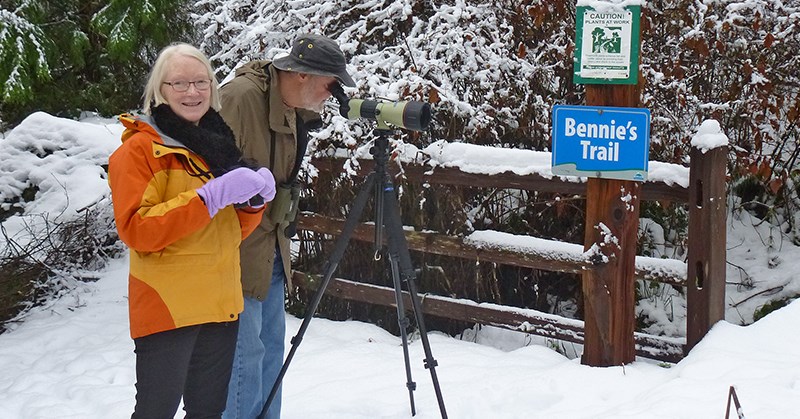Rain, sleet, snow or hail won't keep avid Tri-City birders away from this year's Christmas Bird Count, slated for this Saturday.
In fact, as many as 100 people are signed up to take part in the event to collect data on local birds for submission to the National Audubon Society, the organizer of the 117th annual census, which tracks avian numbers across North America.
Beginning early on Dec. 17, count participants who have been organized into 13 teams will hit local parks, including Colony Farm Regional Park, Port Moody's Shoreline Park and Minnekhada Regional Park as well as Widgeon Creek, DeBoville Slough and local trails.
With binoculars and clipboards at the ready, the volunteers will take note of the birds they see — from the common crow to the small, black dipper that gets its dinner by swimming in creeks.
It takes a trained eye and some knowledge, although handy guides will be available for the novices. And while not every volunteer lasts the entire day, the hardcore birders will stick it out, regardless of the cold, with as many as 9,000 to 11,000 individual birds tallied in a single day.
Coquitlam biologist and nature photographer Lee Harding said the Christmas bird count is important because the information gathered is used to plot trends in the health of the bird population, and how it may be affected by development.
"The statisticians make sense of all the data and you get a fairly accurate snapshot," Harding said.
For example, local birders have noted that the Anna's hummingbird has made its way up to B.C. from southern California and is now seen more often during the cold winter months. This could be because of climate change but also important is the availability of food, Harding said, because people are putting out the sweet liquid the hummingbirds like to eat.
But those who do must be careful not to let their food source freeze or evaporate, or the tiny birds will starve. He recommends having two hummingbird feeders on the go so that they can be replenished even during the harshest cold — like the weather that is expected this week.
While counting birds might seem like a boring task, Harding and colleague Victoria Otton say it's a lot of fun, with teams vying to get the highest numbers or the rarest species.
"It's all very friendly and 'joke-y,'" said Otton. "It's seeing rarities but you also don't want to miss the obvious."
• More information about the Christmas Bird Count is available at audubon.org/conservation/science/christmas-bird-count.



